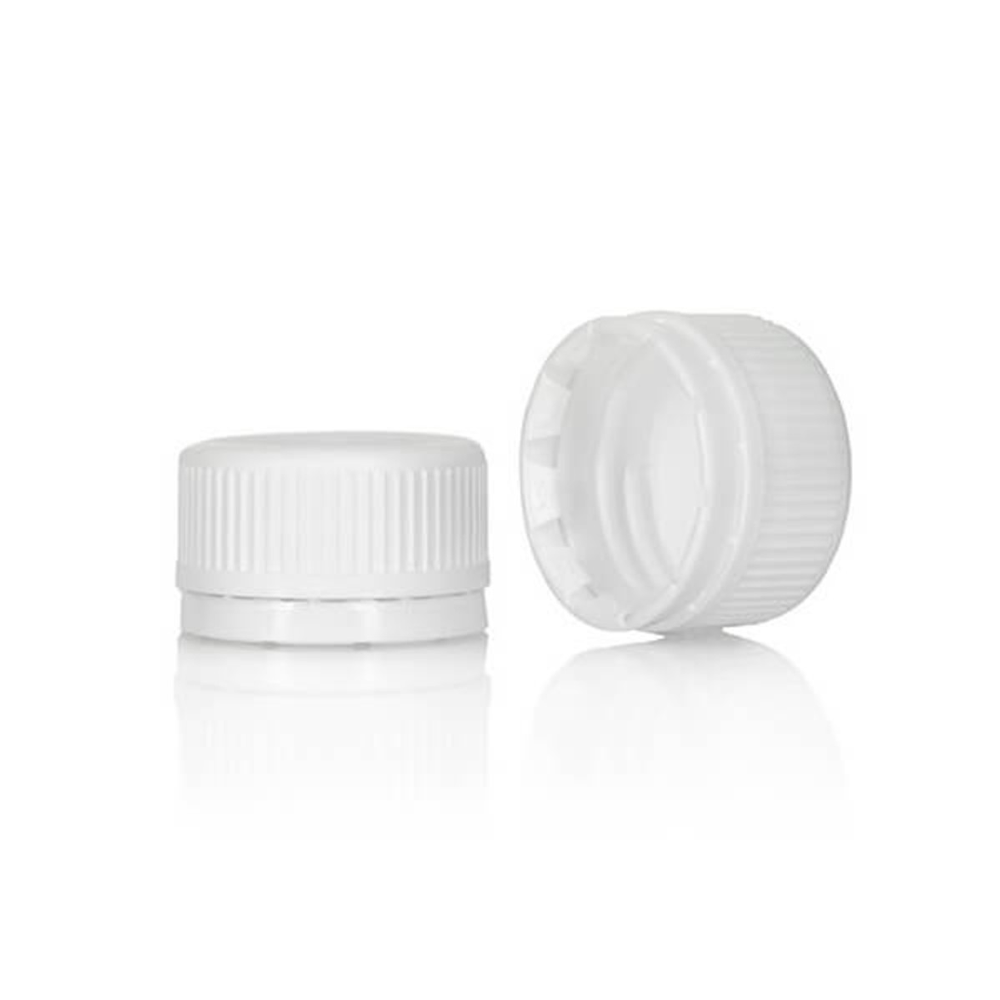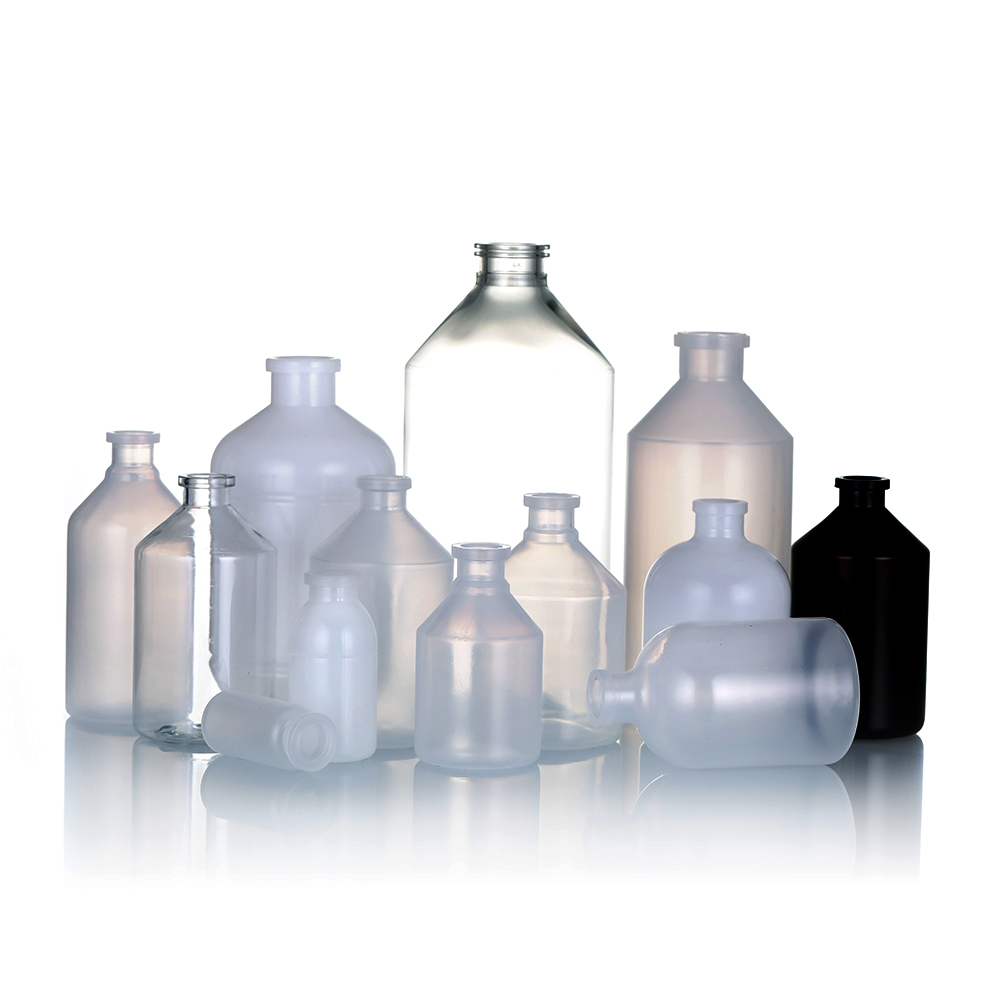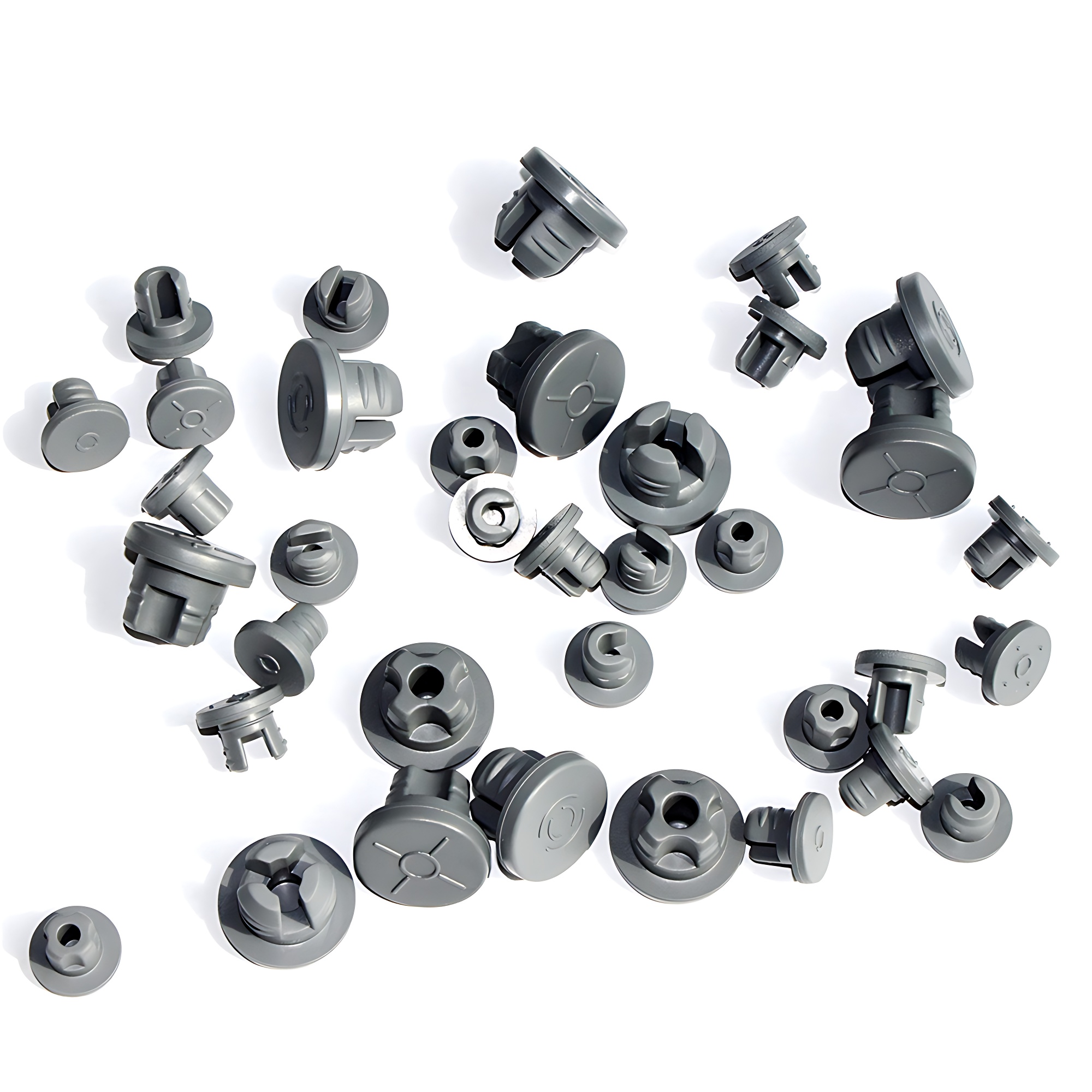Plastic medicine bottles, used in pharmaceutical packaging, are lightweight, durable, and cost-effective containers that hold pills, capsules, herbal products, and supplements. Compared to traditional glass containers, plastic medicine bottles effectively protect medications from moisture and feature child-resistant and tamper-evident functions while being more cost-efficient. As a result, they have become the preferred packaging solution in the pharmaceutical industry.
To meet consumers’ safety demands, plastic medicine bottles are designed with a focus on child safety and tamper resistance, ensuring the security of households. With an increasing emphasis on environmental protection, companies are also exploring using renewable materials and eco-friendly plastics to reduce their environmental impact.
Plastic medicine bottles play a vital role in pharmaceutical packaging, constantly innovating to embrace the future trend of environmental consciousness.
1. Plastic medicine bottles made of various materials
● HDPE (high density polyethylene)
● LDPE (low density polyethylene)
● PP (polypropylene)
● PET (polyethylene terephthalate)
2. Different shapes plastic medicine bottles
Plastic medicine bottles come in various shapes, including cylindrical, oval, square, and conical. Cylindrical plastic medicine bottles are simple and practical, making storage and transportation easy. Oval plastic medicine bottles have an elegant appearance and offer a comfortable grip. Square plastic medicine bottles provide stability and stackability advantages. Conical bottles are commonly used for liquid medications, facilitating easy pouring and flow. Other uniquely-shaped bottles are often designed to attract consumers’ attention.
3. The market for plastic medicine bottles
Our plastic packaging is suitable for the pharmaceutical, health supplement, and veterinary medicine industries.

Pharmaceutical Market: In the pharmaceutical industry, plastic medicine bottles are widely used to package various medicines, such as pills, capsules, granules, and liquid medications. As a crucial component of drug packaging, plastic medicine bottles effectively protect the quality and safety of medicines, preventing moisture, oxidation, and contamination, thus ensuring stability and efficacy. Additionally, plastic medicine bottles offer cost-effectiveness and convenience, meeting the pharmaceutical companies’ demands for large-scale drug packaging, thereby enhancing production efficiency and sales speed.
Health Supplement Market: Plastic medicine bottles also find extensive application in the health supplement market. Health supplements include various nutritional supplements, natural herbal products, vitamins, and minerals, all requiring reliable packaging to preserve their quality and constituents. Due to their durability, lightweight, and cost-effectiveness, plastic medicine bottles are ideal for health supplement manufacturers. These bottles effectively safeguard health supplements from moisture, oxidation, and external contamination, maintaining their active ingredients and efficacy while remaining portable and convenient for consumers.
Veterinary Medicine Market: Similarly, plastic medicine bottles play a significant role in the veterinary medicine sector. Veterinary medicines encompass drugs for livestock and pets, necessitating secure and reliable packaging to ensure animal well-being. Plastic medicine bottles meet the packaging needs of veterinary medication, providing excellent sealing and moisture resistance to protect them from dampness and contamination, thereby ensuring their effectiveness and therapeutic benefits. Manufacturers and veterinary institutions often require a large quantity of veterinary medicine packaging, and the wholesale supply of plastic medicine bottles meets this demand, promoting the steady development of the veterinary medicine market.
4. Get to Know Plastic Medicine Bottle Capacity
The capacity of plastic medicine bottles can vary according to different needs and applications, typically expressed in millilitres (ml or cc). The capacity of plastic medicine bottles can range from a few millilitres to several litres, depending on the medication’s dosage and frequency of use.When classified by capacity, they are generally grouped into the following typical specifications:
Small: These plastic medicine bottles usually hold between a few millilitres to around 50 millilitres, suitable for packaging small-dose medications such as pills, capsules, and liquid formulations.
Medium: Medium-capacity plastic medicine bottles range from approximately 50 to 200 millilitres, suitable for loading larger doses of medications or medications used multiple times.
Large: These plastic medicine bottles typically hold over 200 millilitres and can reach several litres. Large-capacity bottles are suitable for packaging liquid formulations, oral solutions, and other medications that require larger quantities.
5. Plastic bottle neck finish and thread styles
Common Bottle Neck Finish
Common sizes of plastic medicine bottle necks include 28mm, 33mm, 38mm, 45mm, and 53mm. The 28mm neck is frequently used for plastic containers of oral syrups and liquid medications. The 53mm neck is commonly employed for large-sized containers of pharmaceutical products.
Common Thread Styles

This common thread type can be identified by the threads that wrap around the neck of the container continuously without any breaks in the thread.
400 neck finish indicates one thread turn.
410 neck finish indicates one and a half turns.
415 neck finish indicates two thread turns, but the threads are thinner and the neck is typically taller.
425 neck finish indicates two thread turns but is most commonly found on smaller-capacity containers such as vials.ish indicates two thread turns, but the threads are thinner and the neck is typically taller.
430 neck finish indicates one or two thread turns. The threads are deeper than the uniform standard 400 and 415 neck finish. This unique neck shape is known as a buttress and is designed to help the user pour product with better accuracy.
6. How to accurately mesure bottle neck finish
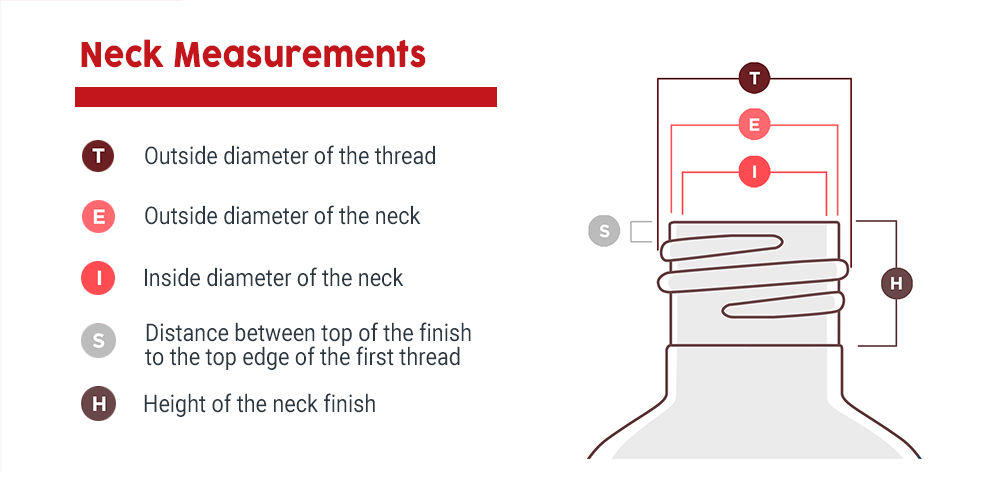
The “T” dimension measures the outside diameter of the thread. This measurement determines the closure counterpart for the bottle.
The “E” dimension measures the outside diameter of the neck. The thread depth is determined by the difference between “E” and “T” divided by two.
The “I” dimension measures the inner diameter of the bottle neck. Specifications for “I” are required at the very minimum for sufficient clearance for filling tubes. Linerless closures with a plug or land seal and dispensing plugs and fitments require a controlled “I” dimension for proper fit.
The “S” dimension measures from the top of the finish to the top edge of the first thread. This measurement is the key factor to determine the orientation of the closure and the amount of thread engagement between the bottle and the cap.
The “H” dimension is the height of the neck finish. This is measured from the top of the neck to the point where the diameter “T” extends down to where it intersects with the shoulder.
7. Plastic Medicine bottle decoration methods
In pharmaceutical packaging, decoration aims to enhance the appeal of medicine bottles, elevate brand image, differentiate various product lines, or improve the identification of medications.
Heat Transfer Printing
Heat transfer, also known as thermal printing, thermal-transfer printing and thermal-wax transfer, is a method of printing that allows you to print a design onto an object. It uses the process of heat to transfer an image created in wax to the plastic bottles.
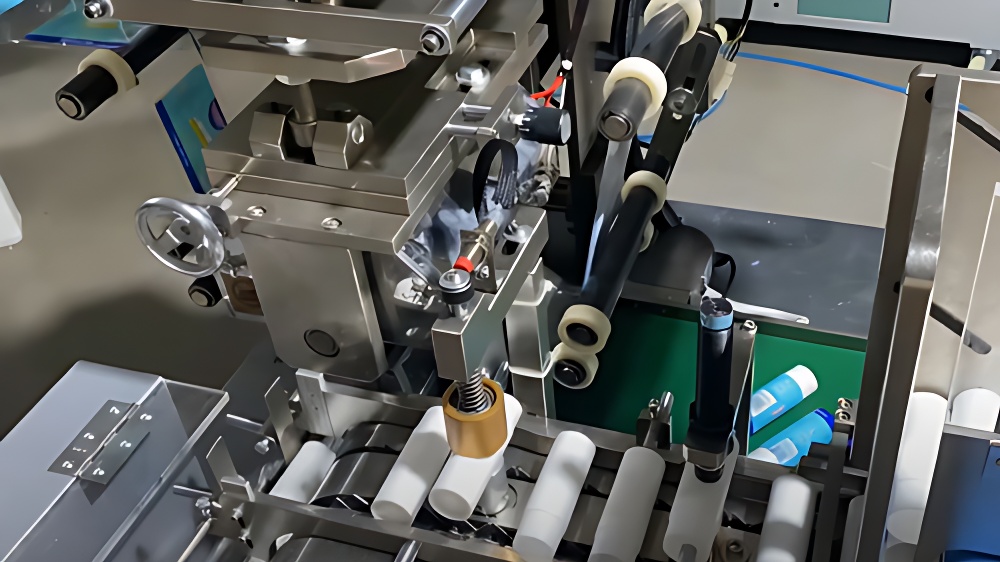
Silk Screen Printing
Silk Screen Printing is a form of decoration where ink is directly printed onto a bottle. The ink is forced through a mesh screen and then printed onto the bottle by a squeegee. Once the ink is applied, it is cured under UV or LED lights to ensure the ink sticks to the bottle and will not smear or rub off.It creates high image quality.
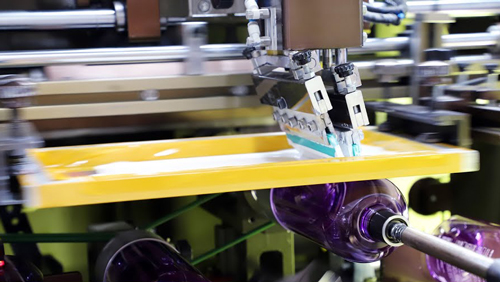
Offset Printing
Offset printing is also called offset lithography. It is a printing press technique that transfers the ink from a plate to a rubber roller (or blanket) and then to various substrates to produce high quality images and designs.
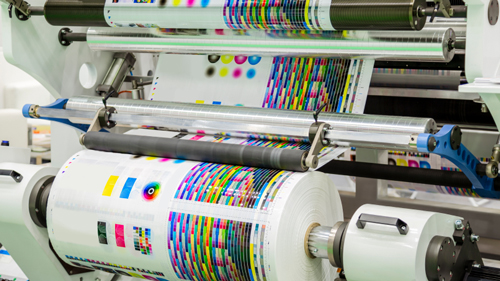
Custom Labels
Low cost, high efficiency
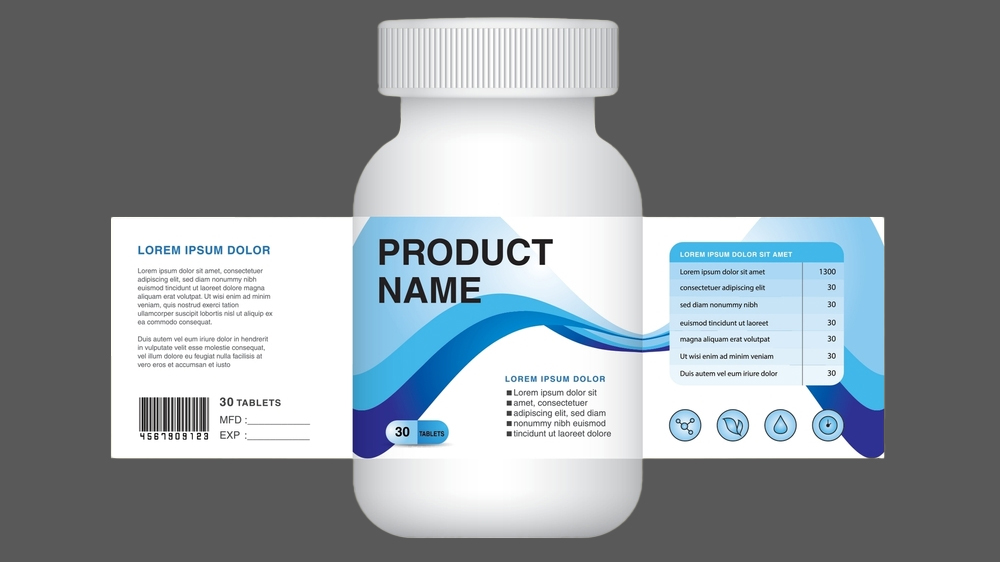
In-Mold Labeling
In-mold labeling (IML) is a labeling method in which a pre-printed film is applied to a mold before the plastic bottles. Plastic pellets or resin are then heated and placed into the mold where it merges with the label to create a final, single product.In-mold labels offer strong, hygienic label solutions that can showcase high-resolution images and make your products stand out.
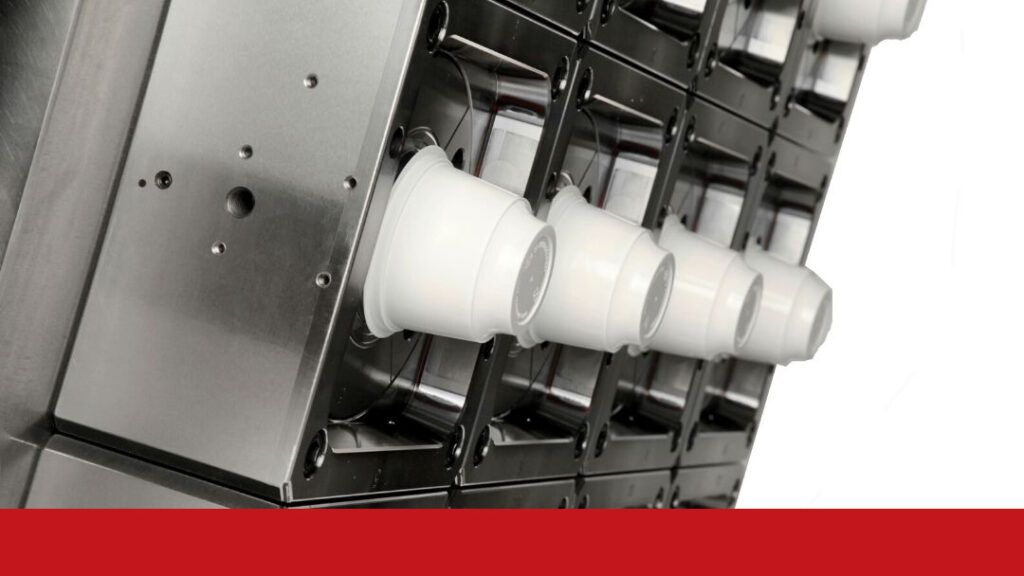
8. How to select a color of empty pill bottles
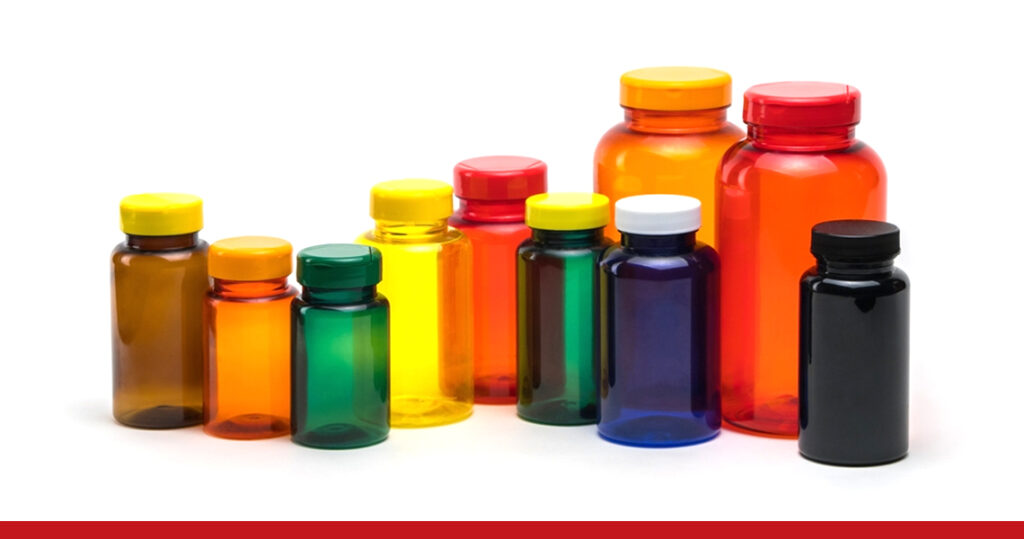
Natural PP material is typically white or milky white and possesses a certain level of transparency.
Natural HDPE material is generally white, milky white, or light yellow and is usually opaque.
Natural PET material is typically transparent.
How to manufacture medicine bottles in different colors? Creating medicine bottles in various colors is typically achieved by adding pigments or masterbatch into the plastic raw materials. These pigments or masterbatch can alter the color of the plastic, giving the medicine bottles different hues.
You can use a PMS color to confirm and compare the desired custom color for the bottles.
9. What are types of caps
10. How to seal plastic containers for medicines
Pressure Sensitive Liners:
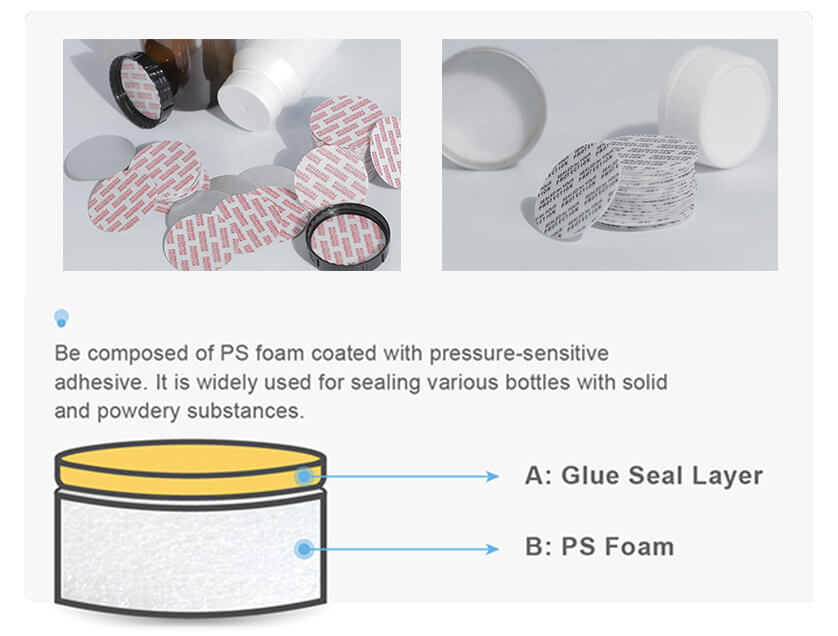
The material of Pressure sensitive liner is Polystyrene foam, which can be in direct contact with the medicine.
Pressure sensitive liner is a fast, easy way to seal the bottle with the tamper-evident feature. Its material, polystyrene foam, is a kind of safe material that can be in direct contact with the medicine.The liners work for all containers made of glass and plastic. But because of their water permeability, they’re ideally used for solid medicine like capsules, pills, tablets etc.
Put the pressure-sensitive seal inside the cap (the side coated with a torque-activated adhesive is outside); screw the cap tightly, and then the liner will be sealed on the bottle mouth by the pressure.
Induction Heat Seal:
Usually induction Seal liners are most commonly used as Foil Seal; it is made up of laminated products. The top layer is a paper board, The second layer is wax, and the third is aluminium foil. The bottom layer is a polymer film pressed onto aluminium foil.
Induction heat liners are sealed by a heat sealing machine.
The electromagnetic field is emitted through the induction coil of the heat-sensing device, and the eddy current of the coil heats the aluminium foil. The heat causes the wax above the aluminium foil to melt and be absorbed by the pulp board backing. As the wax disappears, the aluminium foil falls off the pulp board.
The aluminium, which is conductive, is heated by eddy currents from the coil. The hot foil melts the thin layer of wax e, which is then absorbed into the pulpboard. When the wax disappears, the foil falls from the pulpboard. On the bottom side of the foil, the polymer that touches the container begins to melt as well. It flows down and hardens again, and finally sticks to the bottle.

You can browse 《How to Seal Plastic Medicine Bottles》 to learn more about the specific content of sealed plastic bottles
11. The benefits of using plastic bottles for healthcare or Pharmaceutical
Using plastic bottles for pharmaceutical packaging brings many benefits, making it a common choice in the pharmaceutical industry.
- Drug Safety Assurance: Plastic bottles offer excellent sealing capabilities, effectively preventing drugs from moisture, oxidation, and contamination, ensuring the quality and safety of medications. The tight seal also prevents drug leakage, avoiding adverse effects on users and the environment.
- Lightweight and Portable: Compared to glass bottles, plastic bottles are lighter, making them convenient to carry and transport. This is especially beneficial for patients who need to carry medications in their daily lives and for medical facilities when dispensing medicines.
- Durability and Resilience: Plastic bottles are more durable and less prone to breakage compared to glass bottles, reducing the risk of accidental damage and medication wastage.
- Cost-effectiveness: Plastic bottles are more cost-effective than glass bottles, lowering the manufacturing cost of drug packaging and consequently reducing the price of medications.
- Environmental Friendliness and Sustainability: Plastic bottles can be made from recyclable and degradable materials, contributing to reducing environmental impact. Additionally, the smaller space occupied by plastic bottles during transportation reduces transportation costs and energy consumption.
12. Are Plastic Bottles Safe for Drugs?
Plastic medicine bottles are safe, but it is crucial to use safe plastic materials and adhere to relevant standards during the manufacturing process.
- Material Selection: Choose medical-grade plastic materials that comply with legal regulations, such as PET, HDPE, and PP. These plastics are widely recognized as safe packaging materials and can be used for food and drug contact.
- Production and Processing: The production process of plastic medicine bottles should comply with GMP standards to avoid contamination and impurities. The hygiene status of production processes and equipment is essential to ensure the safety of the bottles.
- Sealing Capability: Plastic medicine bottles should have good sealing properties to prevent drugs from being affected by moisture, oxidation, and contamination. Proper sealing prevents drug leakage and contamination risks.
- Pigments and Additives: Use safe pigments and additives to adjust the color and performance of plastic medicine bottles, ensuring they do not release harmful substances.
- Quality Control: Pharmaceutical companies and packaging suppliers should implement strict quality control measures to ensure the quality and safety of plastic medicine bottles.
- Storage and Use: The storage and use of drugs in plastic medicine bottles should adhere to pharmaceutical production and storage standards. Drugs should not exceed their labeled shelf life and should be stored under appropriate temperature and humidity conditions.
13. How to properly store empty plastic bottles for pharmaceutical?
Proper storage of plastic bottles ensures their quality, safety, and extends their lifespan. Here are the storage methods for plastic bottles:
Clean and Dry: Before storage, ensure that the plastic bottles are clean and free from any dirt or residue. Use a mild detergent and clean water for washing, then thoroughly air-dry them.
Avoid Direct Sunlight: Store plastic bottles in a place where they are protected from direct sunlight. Ultraviolet rays in sunlight can degrade plastic, affecting its quality and durability.
Avoid High-Temperature Environments: Plastic bottles should not be exposed to high temperatures to prevent deformation or softening of the plastic, which may impact its sealing and stability.
Avoid Extreme Temperature Changes: Avoid rapid temperature changes as they can cause stress in the plastic bottles, affecting their performance and lifespan. Store the bottles in a relatively stable temperature environment whenever possible.
Keep Away from Chemicals: Plastic bottles should not come into contact with chemicals or other harmful substances to prevent corrosion or contamination of the plastic.
Labeling: When storing plastic bottles, labeling or marking them can help identify and distinguish different types of medications or chemicals.
Neat Stacking: Plastic bottles should be stacked vertically, avoiding overlapping or tilting to ensure stability and sealing.
Keep Dry: Try to avoid leaving plastic bottles exposed to a damp environment for extended periods to preserve their performance and moisture resistance.
14. Are empty plastic medicine bottles recyclable?
Plastic bottles are generally recyclable. They are commonly made from plastic materials such as PET, HDPE, or PP, which fall under the category of recyclable plastics. Recycling plastic bottles not only reduces the demand for virgin plastic but also decreases the environmental pollution caused by landfilling and incineration of waste. Moreover, recycling plastic bottles contributes to promoting a circular economy, increasing resource efficiency, and achieving sustainable development.
Generally, the bottom of plastic bottles has recycling grade symbols.The recycling grade symbol, also known as recycling logo or recycling code, is a common symbol found on plastic products used to indicate the material type and recyclability of the plastic item. It typically consists of a triangle formed by three arrows, with a number and the abbreviation of the material in the center.
LaiyangPackaging is a professional enterprise specialized in manufacturing and researching plastic medicine bottles. We provide top-quality medicine bottles and seals to hundreds of renowned companies worldwide. Our packaging experts offer reliable and stable product solutions, assisting businesses in establishing compliant documentation for their pharmaceuticals. Choosing us means not only selecting packaging products but also choosing a reliable business partner.









